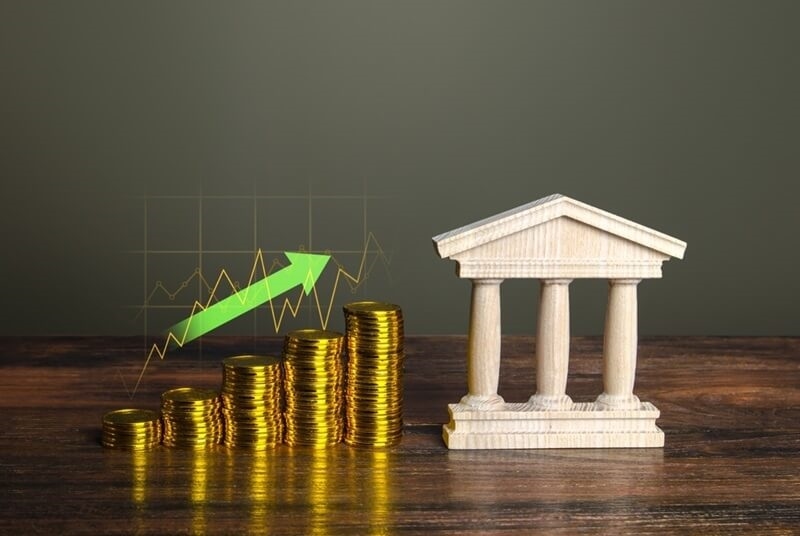
Ever see those numbers at the bottom of the news or hear about the stock market's crazy ups and downs? You've probably wondered what causes all that. Why do stocks suddenly take off one day and then crash the next? What's with those red and green arrows you always see?
Figuring out how the money stuff works can seem hard. If you take it slow, you can easily see how it all connects. This blog post will tell you the factors that influence market behavior and give you a simple look at some important U.S. numbers. Plus, it will explain why markets go up and down.

Before we get into what moves them, let's talk basics. Financial markets are just places where people buy and sell things like stocks, bonds, and money from other countries. The U.S. has some of the biggest markets out there, including:
Each of these markets reacts to its own things, but they are all joined. What happens to one can change another.
Let’s see what commonly drives financial markets in the US:
One of the biggest changes in the markets is how the economy is doing. These numbers let investors know if the U.S. economy is doing well. Here's U.S. economic indicators explained:
Knowing what these numbers mean helps you guess how investors will act.
Another big thing that moves the market is what they call monetary policy. The Federal Reserve controls this. When they change interest rates, it changes:
If interest rates go up, borrowing money costs more. Businesses might not expand as much, and people might postpone big buys. This slowdown might pull the stock prices down.
If you want to get into the market, see what the Fed is up to.
Markets also move because of what's up with companies. Every three months, public companies put out reports that show whether they made or lost money.
Big earnings news often makes a company's stock price go up. Bad stuff can pull the stock down. Sometimes, even a report that is good won't help if it's not as good as what the experts wanted.
Besides earnings, other company stuff matters too:
All these things can change in the market, no matter what company or group.
Markets don't just move from what’s in the U.S. Stuff from all over the world can shake Wall Street.
Like:
Look at the COVID-19 sickness, for one. In early 2020, stock markets all over the world fell when places closed and work stopped. That shows why markets can jump from things we didn't see coming.
At times, the market moves not by real numbers but by what people feel. How investors feel is about the mood or vibe of the market. It can be happy (bullish) or sad (bearish).
When people feel sure, they buy more shares, and prices go up. But when they are scared, they sell—and prices go down.
News, talk on social media, and even small talks can change how people feel. This is why trends in the stock market and reasons for them don’t always match real money facts.
If you want to get what makes markets move each day, it's key to know this side of buying.
Like any place where people swap goods, money markets go by the need and supply rules.
For stocks, supply is how many shares are out there, and demand is how many people want them. If a well-liked tech firm shares a new top thing, more may want its shares, making the price shoot up.
This happens all the time and helps tell why markets move up and down—even when news stays the same.
It's good to know the stock market trends and causes. Markets mostly move in long ways:
These ways come from a mix of all the parts we talked about—money signs, rates, world events, and feelings. For instance, strong growth and few jobless people might keep a bull market going. But fear of less money or a big money mess could start a bear market.
Knowing if the market is on a bull or bear run helps people pick when to buy, hold, or sell.
Now, many trades are made not by people but by set rules—codes that trade based on set rules.
These can make market moves big. For instance, if a stock starts to fall fast, such codes might sell more shares quick, making it drop more.
While this doesn't change long-term buying, it’s part of what moves money markets in short times.
Yes, the media shapes how people see things a lot. News can change both short and long buy moves.
Good news can start by rushing, while bad news can make people sell in fear. Social sites like Reddit and X also move markets now, like with GameStop in 2021.
This shows how new ways of talking are becoming new parts that sway market actions.
Lastly, what the government does can guide markets. These include:
If the place says it will spend more, for one, it may lift what people buy and the money made, making stock prices go up.
Investors often watch the government as closely as they watch Wall Street, because the two are linked deeply.
To get why markets move takes some doing, but you don’t have to know money inside out to start getting the main points. If you keep an eye on key signs and stay in the know, you'll start to see how news and data sway the stock market’s ways and reasons.
Imagine the market like it's alive. It changes and responds to little signals and clues. The more you know what pushes money markets, the surer you’ll feel as someone putting money in or just watching the money world around you.
This content was created by AI